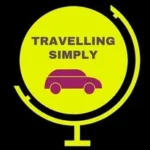Our accommodation is a little away from the centre of Paris on this visit, across the street from St Paul Village. It is within walking distance to all the iconic landmarks and gives us an opportunity to pretend to be Parisians and be tourists.
There is another village tucked away from the visitor’s gaze, Butte Bergeyre.
We set off early on a Saturday morning to find it. The streets are relatively empty apart from a few walkers like us getting an early start to the day. The city is quietly awakening.
A tourist stops us at the Place de Bastille to ask us whe Eiffel Tower is. It’s about an hour easy stroll. He decides it is too far to walk there. We hope he makes the effort to see it at some point in his visit!

Place de la Republique in the early morning light
Through Place de Republique and up the slight incline we walk taking in the change in scenery. Shop fronts are covered with grafitti covered roller doors so we can only imagine what is behind.
We pass by crowded clubs where patrons have spilled onto the street clasping onto the remnants of the night before. They are peacefully chatting and no one appears overly rowdy or intoxicated as they make way for us to pass by.
A little further on, the shop signs are written in Chinese. We are in Paris’ Chinatown district. The streets are still deserted, but we spot a couple of Chinese matrons taking their morning walk too.
Looking about us as we reach the top of the street, we notice that the atmosphere has once again changed. A boulangerie is opening up and also the local grocery store, large apartment building line Rue Mannin the street by the park which we have come to find.
Joggers run past us and the inhabitants of the area are out walking their dogs. We are looking for the steps at 21 Rue Mannin which are supposed to take us up to our destination.
Is it because we are so busy looking at everything else around us, or the fact that the steps are not obvious nor signposted that we walk straight past them? Or, that this is why Butte Bergeyre is a secret little spot.
We backtrack a little and climb the concrete steps to be greeted with narrow and empty cobblestoned streets lined with villas. Some are covered in ivy and others have their street frontage lined with flower pots. Not a soul is in sight as we quietly pick our way through the streets conscious of being the intruders in this haven for a select group of Parisians.

One of the villas in Butte Bergeyre
It is not hard to find the spot we have come searching for. At the far end of the small village we come to a well cultivated communal garden and the village vineyard which produces up to 100 bottles of Pinot Gris very year.

The pretty communal garden
We sit down on the perfectly positioned park bench and look out over the grapevines at the scenic view over Paris and the Sacre Couer.

Sacre Couer from the bench at the end of the village
How we got there – Butte Bergeyre is located in the 19th arrondissement. We walked there from Marais in the 4th arrondissement taking approximately 1 hour to get there, mostly because we were stopping along the way to observe our surroundings; take photos; and give a directions.
Another thing. On our way back, we also visited Cimitiere Pere Lachaise located in the 20th arrondissement. The beautiful garden cemetery is a tranquil sanctuary with rues of ornate tombs including Oscar Wilde, Jim Morrison and Chopin.
























